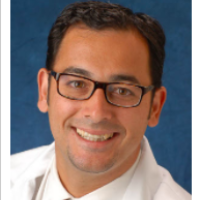ACR 2017 Highlights: RA, SpA, PsA, OA, Lupus and More Save
Another year and another great ACR meeting. San Diego proved to be a an amazing host with the perfect combination of a convenient convention center with great lodging at walking distances from the conference, amazing food and superb weather.
The quality of the meeting was on par with the host city, with extensive data presented on a range of topics, from social media to drug safety. The organization committee did a great job and I got the feeling that most people felt the congress was user friendly given the magnitude of the event. During this year’s meeting, I had the privilege of working with the RheumNow team, which gave me the opportunity to hone my social media skills and get my Twitter game on. After reviewing plenty of posters and going to numerous presentations, here are my top take home messages as classified by disease state.
Rheumatoid Arthritis
Always at the center of the stage, RA did not disappoint in 2017. Two great debaters discussed the pros and cons of biosimilar use with memorable quotes such as high biosimilar dropout being secondary to “nocebo” vs “data” effect after switching and a great discussion about improved cost effectiveness and access here in the USA, something that has yet to be seen with the available therapies. I have to admit that until I can see a significant value on switching I don’t see the advantage of it.
Psoriatic Arthritis
New ACR/NPF clinical guidelines were presented. Guidelines included recommendations on management, including the use of biologics/oral DMARDs in specific situations. They also addressed some safety issues such as vaccinations along with the importance of treating to target in PsA. It was the impression of some in the room that the specificmanagement recommendations may look a bit outdated not farafter they are published next year given the increasing number of novel effective therapeutic options and data collection in the PsA landscape.
SpA/AS
Lots of news on imaging on this field. The 5 year Desir Cohort analysis on Early AxSpA patients showed that there is an overall low rate of structural progression on this population and that fatty changes on SI joint MRI are the most sensitive measure of structural progression. The potential use of low dose CT by measuring total syndesmophyte score showed anincreased sensitivity as compared to plain films and represents a potential valuable imaging modality on this field. Lastly, there was also new data on therapies diminishing structural progression in AS, with Secukinumab, showing decreased structural progression after 4 years of therapy in AS patients.
Safety
Vaccination and Cancer came on top here. A study discussed at a plenary session showed that holding MTX for 2 weeks in RA patients increased immunogenicity to the Influenzavaccine without a significant increase in flares. No flu related clinical outcomes were measured so more should follow. Another study, in this case a late-breaker, looked at hundreds of patients with a history of malignancy treated with biologics and concluded that RA patients treated with biologics after their cancer had no increase of a second malignancy as compared to those never treated. Data from the Crib study was presented in a pregnancy session, showing no placental crossing of Certolizumab as measured on infant’s umbilical cords supporting its use in women of child bearing potential. Lastly, a late breaking study looked at the incidence of bulls eye maculopathy and blindness in 2000 HCQ exposed patients with results showing only 3 cases of HCQ maculopathy/no blindness.
Lupus/APS
Again, new diagnostic classification criteria was discussed, this time a collaborative project between the ACR and EULAR. New aspects included the introduction of lupusdomains and weighted criteria using both clinical and immunologic domains which included IgG APS antibodies and LAC but not a positive ANA. In regards to APS, Dr. M. Petri discussed date on the limited role of direct oral anticoagulants in preventing further thrombosis and the importance of HCQ use in thrombus prevention.
Osteoporosis
We may need to reconsider the duration of bisphosphonate holidays on our patients after listening to a plenary presentation from Dr. Jeff Curtis. His study analyzed a large Medicare population (>150K pts) and it showed that the risk of hip fracture was significantly increased up to 39% after a 2 year bisphosphonate holiday as compared to continued users.
Osteoarthritis
This field seems to be gathering more interest fast. A prospective cohort study showed progression of radiographic knee OA after intraarticular steroid injections as compared to non-injected knees in a real life setting, similar to results seen in previous RTC. There was also another study of Chondroitin Sulfate showing benefit in knee OA at the 800mg dose. Lastly, bad news in hand EOA as a novel molecule, a dual anti IL1 alpha/beta blocker, failed to meet its primary endpoints.
Miscellaneous diseases
Monoclonal TNF inhibition came out on top here with studies showing benefit on immunosuppressive load reduction with Adalimumab use in uveitis and on multiple clinical manifestations of sarcoidosis.
To complete my highlights, and after having such a nice culinary experience in San Diego, I felt the need to include my top 3 meals while there. In no specific order: the slow roasted pork California burrito at La Puerta (with a side of their famous house margarita), the short rib at Searsuckers (served with a nice local Stone Brewery IPA) and the croqueta Valencia at Cafe Sevilla (along with their refreshing sangria).
Looking forward to Chicago #ACR18.










If you are a health practitioner, you may Login/Register to comment.
Due to the nature of these comment forums, only health practitioners are allowed to comment at this time.